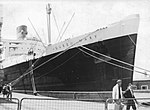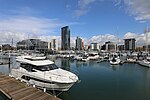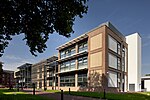Solent Sky

Solent Sky is an aviation museum in Southampton, Hampshire, previously known as Southampton Hall of Aviation. It depicts the history of aviation in Southampton, the Solent area and Hampshire. There is special focus on the Supermarine aircraft company, based in Southampton, and its most famous products, the Supermarine S.6 seaplane and the Supermarine Spitfire, designed by R. J. Mitchell. There is also coverage of the Schneider Trophy seaplane races, twice held at Calshot Spit, and the flying boat services which operated from the Solent. In December 2019 the Calshot Spit lightship was relocated next to the museum in order to be converted into part of the museum's cafe. In September 2020, 3 of Southampton's former trams were moved to the museum site where it is planned they will undergo restoration before going on public display.Construction of the current building began in 1983 and was designed by Barry Eaton, then the City Architect. It opened in 1984.
Excerpt from the Wikipedia article Solent Sky (License: CC BY-SA 3.0, Authors, Images).Solent Sky
Albert Road South, Southampton St Mary's
Geographical coordinates (GPS) Address Phone number Website External links Nearby Places Show on map
Geographical coordinates (GPS)
| Latitude | Longitude |
|---|---|
| N 50.89793 ° | E -1.39313 ° |
Address
Solent Sky
Albert Road South
SO14 3FR Southampton, St Mary's
England, United Kingdom
Open on Google Maps









